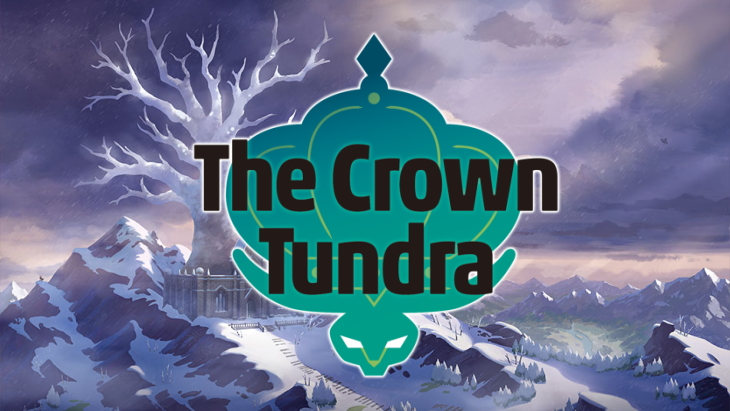
Our review of Pokemon Sword and Shield criticized it for being too easy; missing features of older games, and restrictions on what Pokemon you can catch. Its first expansion, the Isle of Armor, offered new ways to make raising Pokemon easier. Something of little consequence to its short length and asking price.
Now we come to the grand finale, The Crown Tundra. While the Isle of Armor was focused on training, this expansion is focused on exploration. Our recon of the area has found that this frozen wasteland has some diamonds in the snow, but overall it will give you the cold shoulder.
Pokemon Sword Expansion Pass and Pokemon Shield Expansion Pass
Publisher: Nintendo
Developer: Game Freak
Platforms: Nintendo Switch (Reviewed)
Release Date: October22, 2020 (base game November 15, first half of expansion June 17)
Players: 1 (Online Multiplayer)
Price: $29.99
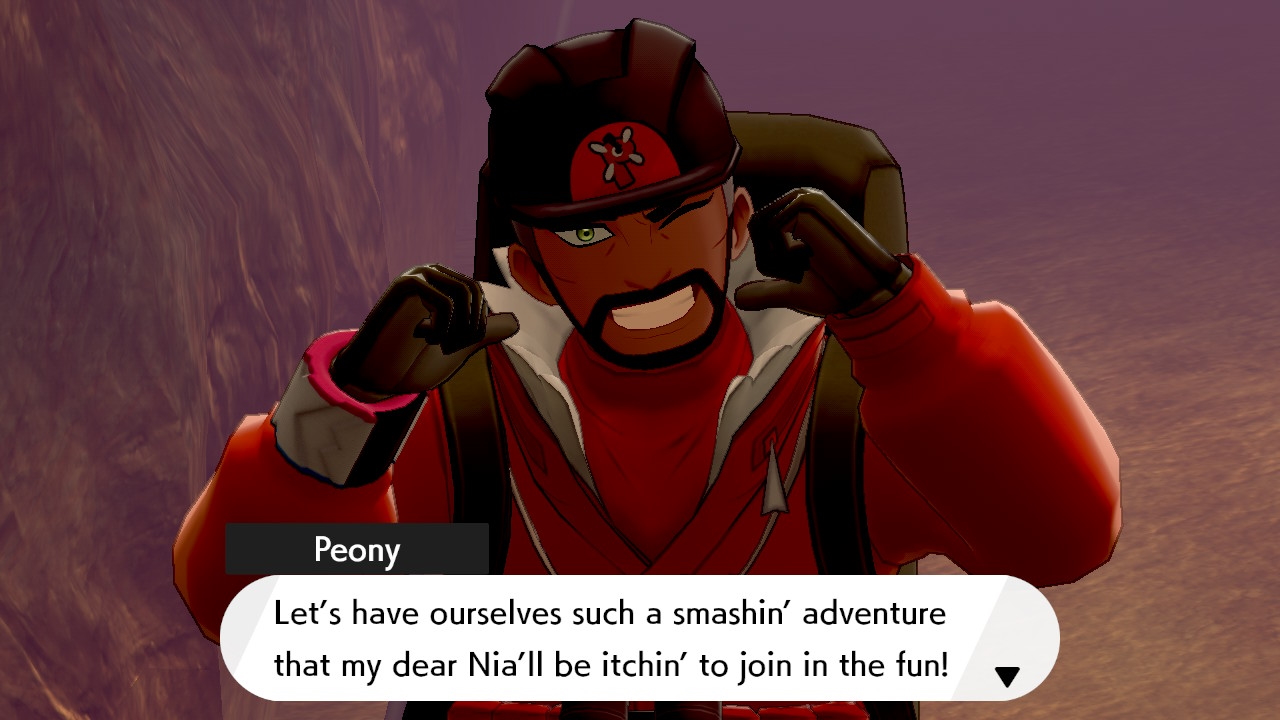
Based on an inverted UK, players travel to the Galar Region’s snowy southern climate. A land almost entirely uninhabited save for one village, and plenty of little (and not so little) Pokemon. The story initially kicks off with a man called Peony, desperately trying to impress his daughter Peonia on a Dad and Daughter vacation.
While he’s clearly passionate about discovering the local mysteries with his daughter, she is only interested in the Dynamax adventures (more on that in a bit). Peony comes across as such a genuinely nice guy, that Peonia’s awkward teenage selfishness almost elevates her into being a nastier villain than the main game’s antagonists.
As you can imagine, the plot is a half-hearted to draw you into an adventure. Among the mysteries of the new land, you quickly learn about Calyrex; a local not-so-mythical myth that once helped crops grow and ruled over the land. Sadly, neither the plot with Peony nor Calyrex are really resumed in a satisfying manner.

Despite eventually catching Calyrex, a single NPC mentions the crops are starting to grow; with no real reason it was due to your efforts. The giant tree that once bloomed for the royal beasty never will, and the Tundra seems as partially barren as ever.
Likewise, Peonia eventually comes around to wanting to hang with her dad; just after you’ve discovered all the mysteries. It’s played for laughs, with no real growth on her part.
Any mysteries the game has are almost always made blatant, yet the truth behind the mysteries is never really explained. Want to know why legendaries from other regions are here, or why there are temples to Hoenn’s Regi trio? So do I.
While a certain event during the story could hand-wave an excuse (if you do most of the writer’s work for them in your head), it seems far more likely everything was wrapped up quickly in the narrative department. NPCs thank you for catching legendaries, and that’s it.
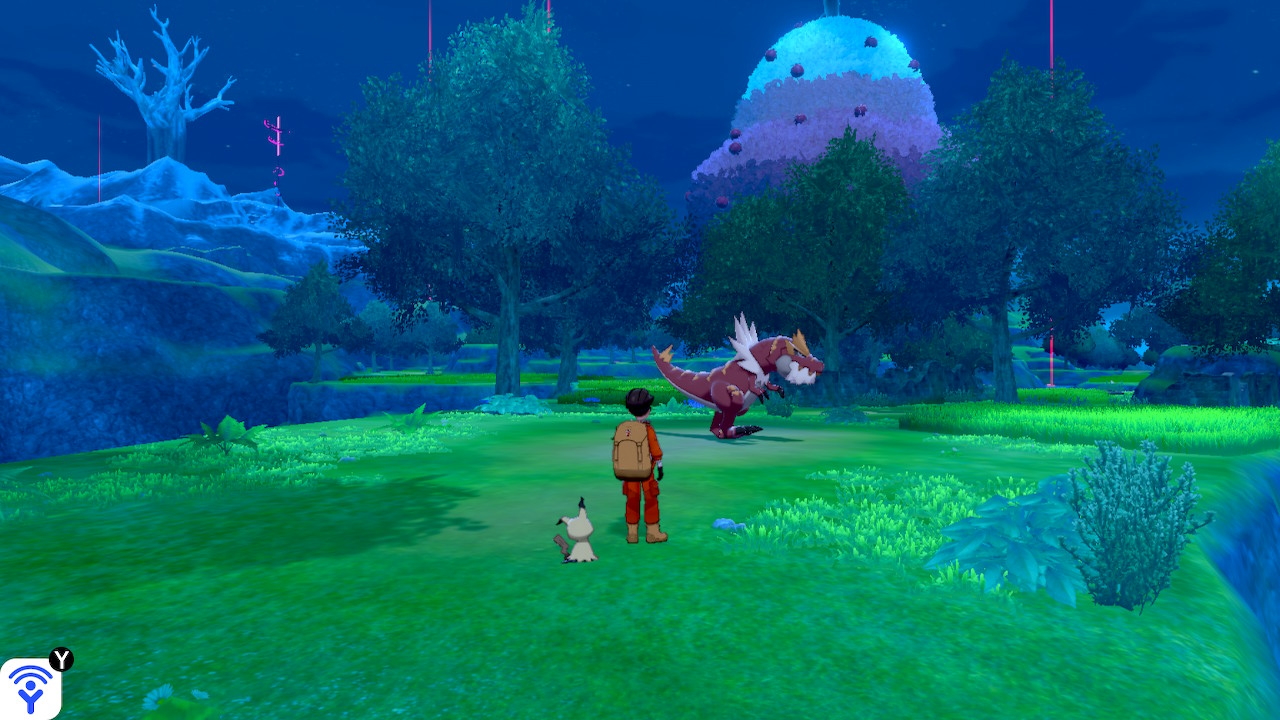
The meat of the game is battling and catching however. The region is a delight to explore- taking the wide open spaces of the original Wild Area, and the better area design of the Isle of Armor.
The Tundra feels much larger than the Wild Area at first, though in reality probably is not that much bigger. The odd cave has a few well-knotted branching paths akin to the 2D games, while everything is shaped naturally as oppose to a video-game level. It gives me small hope level-design will be improved with future entries.
Once you begin your quest to hunt down legendary Pokemon in the Tundra, you can tackle the events in any order. You can stop half-way through one quest and try the other, clear them out all in one go, or whatever you wish. While extremely simple, it encourages players to go off track- which usually leads to finding hidden items and new Pokemon.
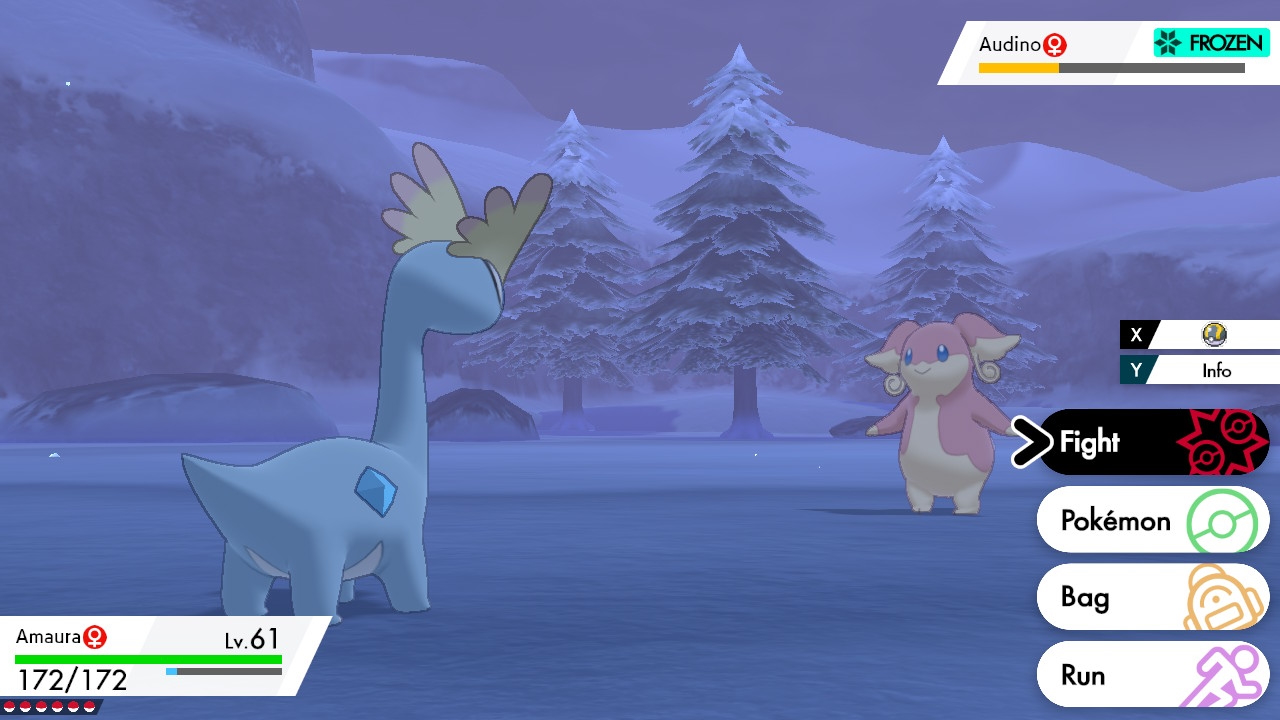
The Isle of Armor brought over 100 Pokemon back to the game, along with 4 new Pokemon. The Crown Tundra also brings 100 Pokemon back into the fray, but it won’t feel like it. Over half of these Pokemon are encountered only in Dynamax Adventures. Over 200 Pokemon cannot be transferred, though they have appeared in games in the prior generation.
As such, even casually capturing new Pokemon you see as you run around will quickly nab you most of the wild Pokemon. Ignoring breeding or evolution, you can probably capture all the wild Pokemon within an hour or two of first getting onto the island. I had three quarters of the Pokedex complete when I first set foot on the Tundra.
There are also next to no new Pokemon either. We get a new form for Slowking, the Kanto legendary birds, two new Regis, Calyrex, and two new Pokemon that were actually kept as a surprise… If you ignored the leak a few days before launch.
The land might be fun to explore, but wild Pokemon are almost an after-thought. Outside of the main story, odds are you won’t be exploring much; save nabbing a few rare items that span and the Raid Dens. The Isle of Armor still has the odd beast I need to find, while the exploration focused Tundra keeps having me mistake the back of a Jynx’ head for an albino Piloswine out of sheer hope.
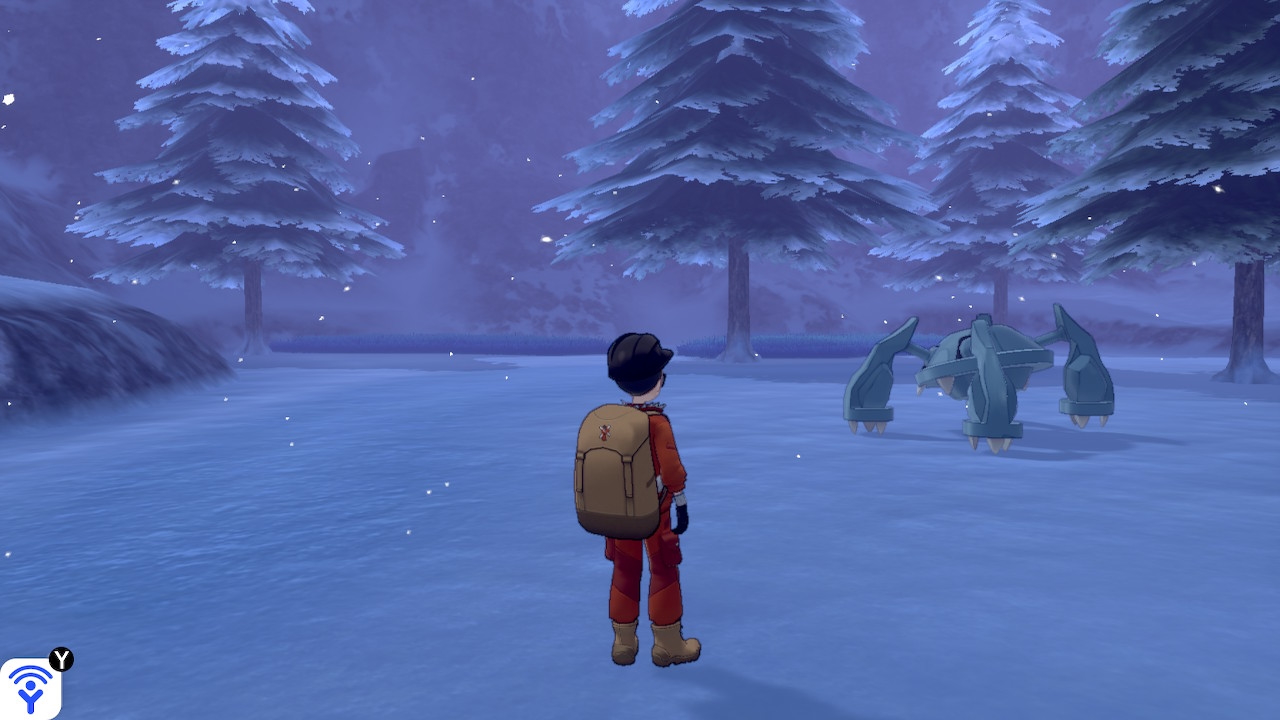
The emphasis on the new Pokemon are few “heavy hitters” from past generations; pseudo-legendaries like Dragonite and Metagross, along with Pokemon that thrive in icy conditions, and even fossil Pokemon roaming around. Pokedex lore makes it pretty clear that these Pokemon had escaped captivity after revival, as oppose to the land being so-untouched that ancient Pokemon thrived since- well, ancient times.
Along with the ruins for each of the Regis having simple riddles to solve to get in, the game also has you tracking “evidence” of Black and White‘s musketeer trio roaming the land. Much like the Diglett quest in the Isle of Armor, you look for small shining scales on the ground. Gather them all, and the beast will appear in the overworld.
Unlike the Diglett quest however, this one attempts to make it easy to solve. While seeing green scales on green grass might sometimes go amiss, it feels like the scales spawn just ahead of you, usually in close proximity to one another. A little simplistic, but it conditions you to scour the land for rare items, and encourages your initial exploration.
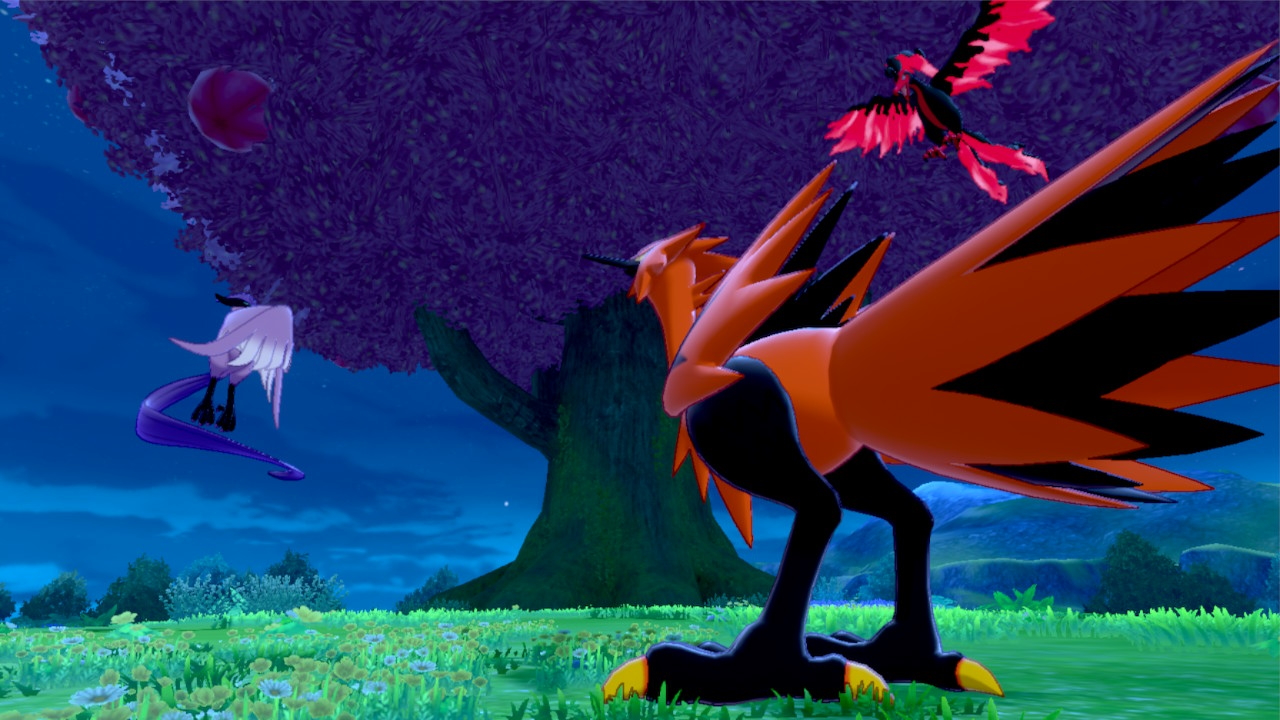
Galar’s version of the legendary birds also do something interesting. All three roam across the mainland, Isle of Armor, and Crown Tundra. Zapdos and Moltres both need you to do something you’d be familiar with before. Chasing down Zapdos is akin to the Rotom Bike challenges, while you need to stand in Moltres’ path as you did with the super-fast Slowpoke.
It’s great to see older techniques the players would have done being brought back; as most good game design should encourage. Combined with how Articuno is handled, I dearly hope future Pokemon games will have more unique ways to track down wild Pokemon beyond having them run into or from you at jogging pace.
Despite my scorn for how most mysteries and puzzles are solved for you, the game does have a few secrets that are a little more obscure. While some “activate” after catching certain Pokemon (and thereby give you a hint), one or two you may never realize without having looked it up.
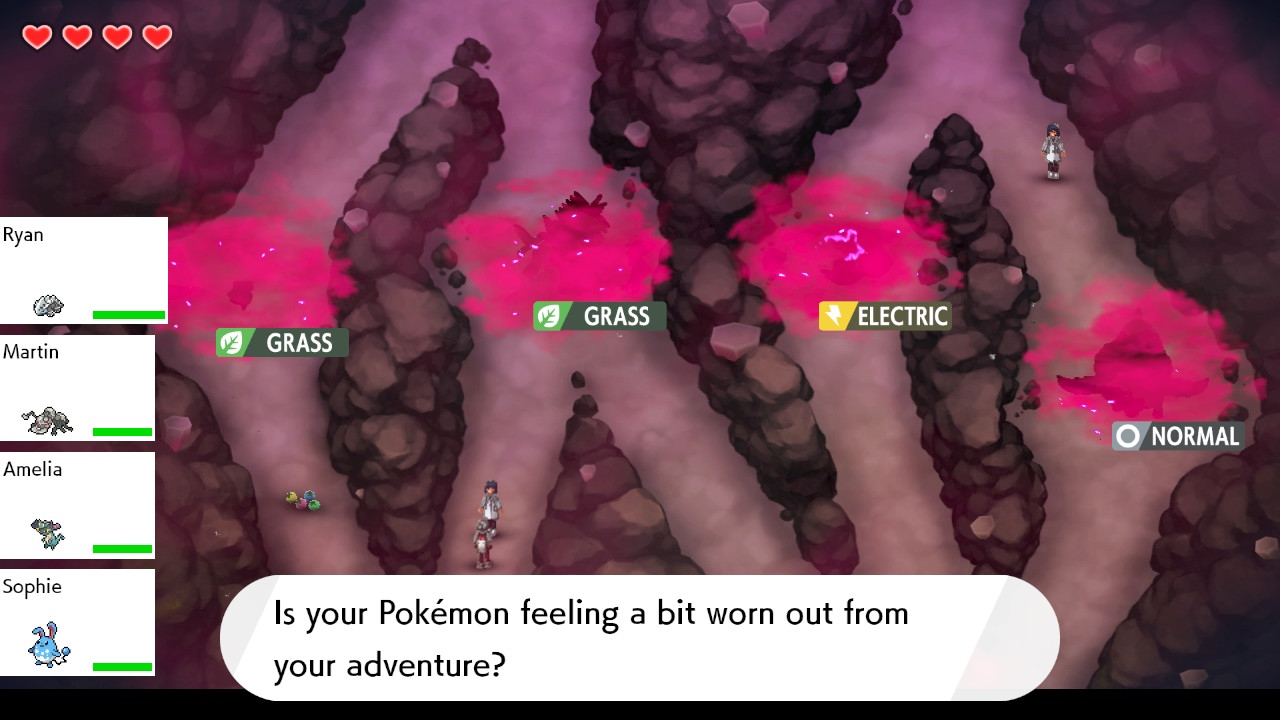
One of the heavily touted features of the expansion are Dynamax Adventures, where past legendaries and even starters can be obtained. While it seems Game Freak learned what people didn’t like about Max Raids, fresh problems are only piled on top.
You enter a cave with three partners (people online or AI), choosing a selection of rental Pokemon to use. You then pick paths to travel down, leading to a Dynamax Pokemon to fight (knowing one of the creature’s types in advance). Unlike Max Raid battles, there are no shields, so you can whale away freely.
All damage carries over from battle to battle however, along with the 4 knock-out limit across all battles before you’re booted out. As such, you’ll need to pick your path carefully; as after three battles you’ll fight a Legendary Pokemon. As they have better stats, they tend to hit like a truck.
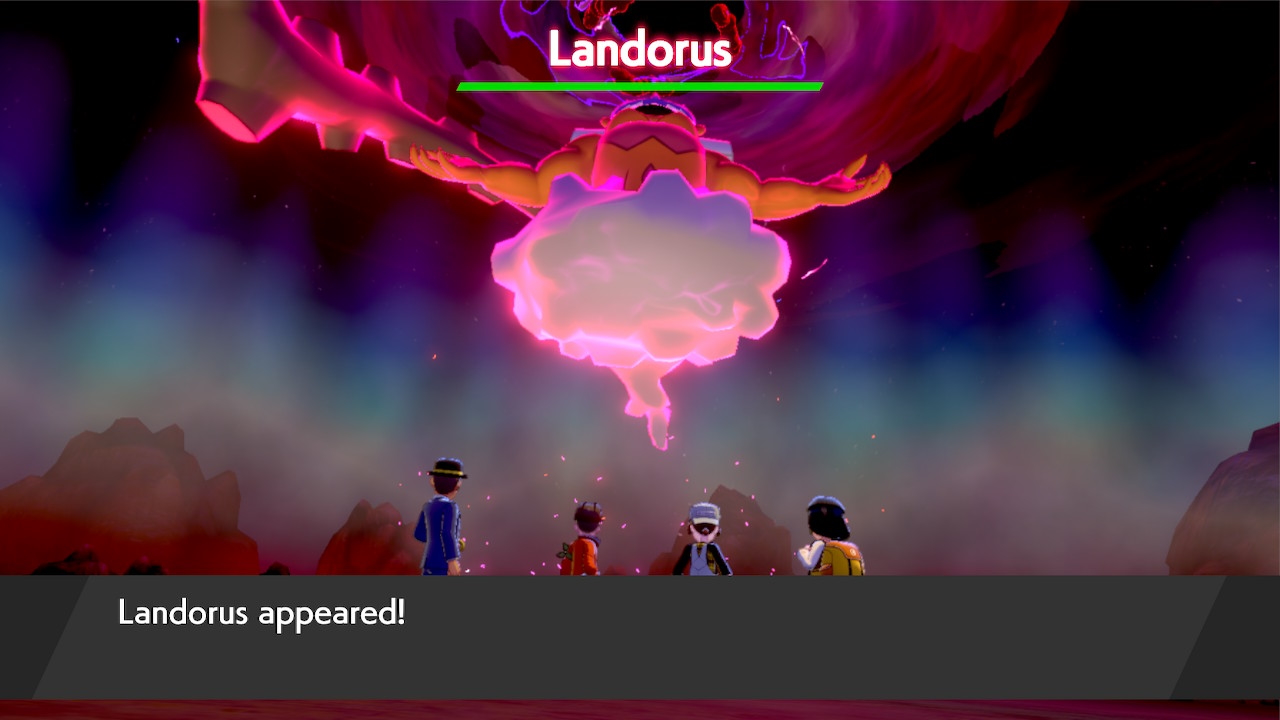
However, paths can have berries to patch you up, or NPCs to give new random rental Pokemon or items for your Pokes to hold for an advantage. You can also swap the Pokemon you’re using for one you have caught- all healed up. Though keep in mind if you reject it, an AI partner will always pick it up for themselves (even if you didn’t catch it).
You may quickly have caught on that Dynamax Adventures are very luck based. You may not encounter a Pokemon that has a type-advantage against the Legendary boss at the end- not to mention your path on the way might be a rocky road based on what your allies pick. Did I also mention the path you pick is under a 10 second time-limit? Think fast kid.
Even if you manage to do well, the Legendary Pokemon can be a nightmare. Some usually have the stats to deal large damage, but are frail to compensate. Dynamax Pokemon get a ton of extra HP, sometimes use powerful Max Moves.
Then consider it can act multiple times in a turn, may have an attack that hits all your group at once, or an ability to boost it stats when it scores a knock-out. How can it be a fair challenge when your are so heavily reliant on being given the right Pokemon and smart AI?
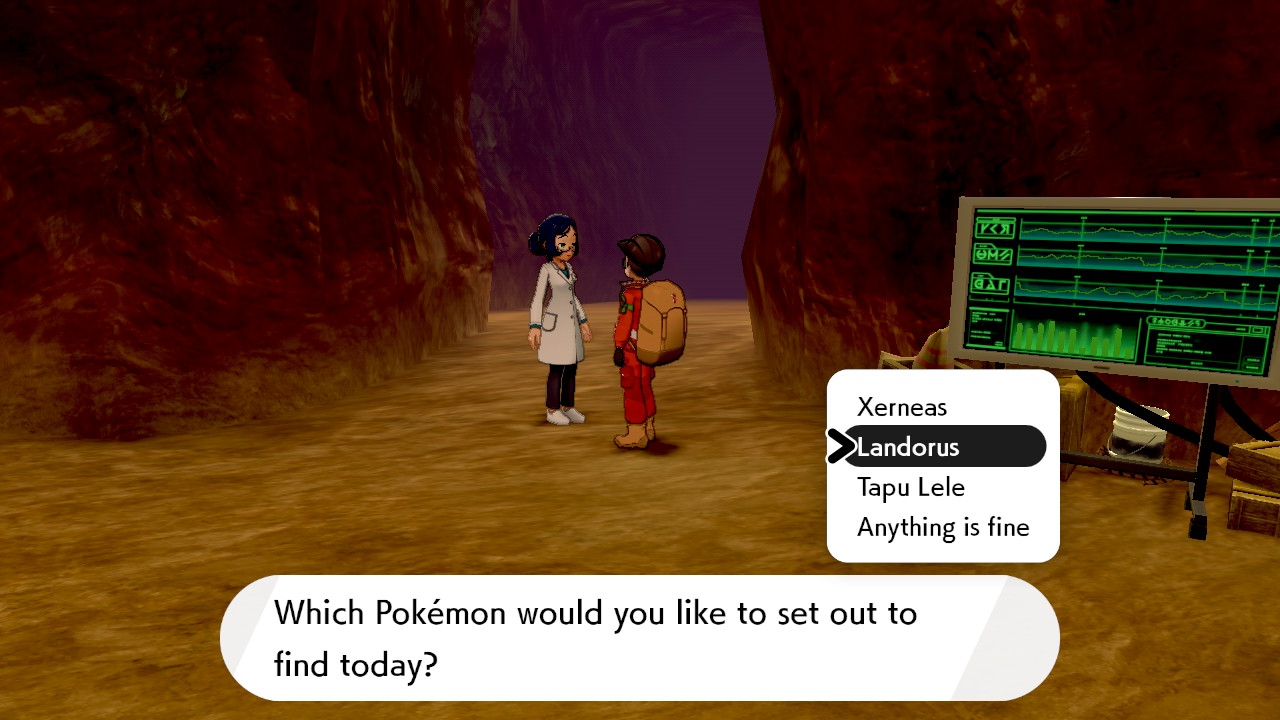
While the initial adventures randomly decide which Legendary you’ll come up against, you can bank up to three “notes” to choose to fight that beast again should you fail (rather than leave it to chance). Why you can’t have a 50+ list of legendary monsters to fight once you’ve seen them is beyond me. You can only catch one of each, but there are reasons to endure it over and over.
Pokemon encountered in Dynamax Adventures have a much higher chance of being shiny. This applies to all the legendaries, along with other rental Pokemon and the past-game starters. Yet, you have no idea if the Pokemon you have caught are shiny until the end of the adventure.
Dynamax Pokemon can certainly appear shiny in Max Raids, and as such it is baffling. I only assume its to prevent rage from the blinding frustration coming from all the RNG that can screw you, only to see your prize in its alternate colored glory; followed by a nuke being thrown in your face.
For further salt in the wound; you can only take one Pokemon out of the den. The odds of getting two shinies at once are unlikely; but what should you do if you want one of the regular Pokemon you caught and the Legendary? Get ready to say goodbye to the other, and hope you can find it again. Logic dictates a shiny legendary takes precedent, but it also dictates this limitation shouldn’t exist.
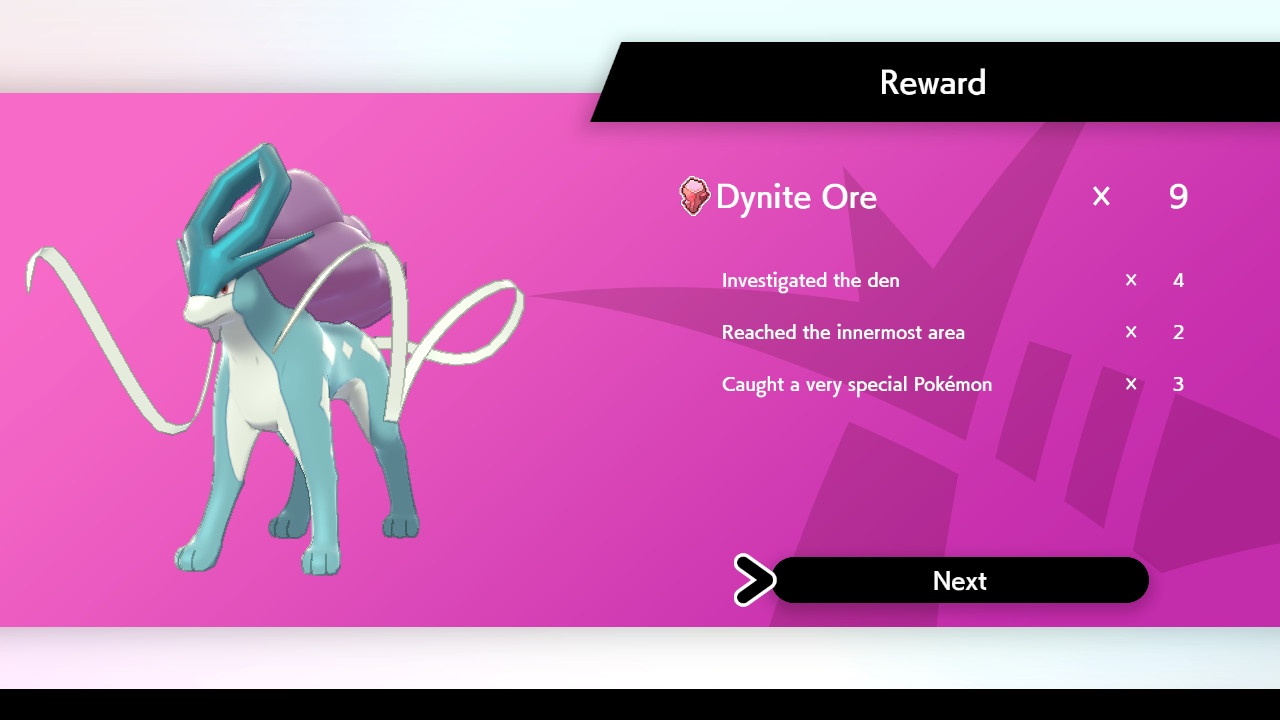
Beating a Dynamax Adventures grants you Dynite Ore; which can be spent on rare items such as Ability Capsules and Bottle Caps. The best of these are the new Ability Patches; which can give a Pokemon it’s hidden ability (rather than the ones most wild Pokemon have).
The rate you get Dynite Ore is pathetic; about ten or twelve, and the odd one from Max Raid Dens. But don’t worry, you can unlock Endless Dynamax Adventures which let you build up a larger haul of Dynite Ore until you lose. All it costs, is you can’t keep any Pokemon from it.
The Isle of Armor beautifully married several resources and currencies together, in a system that encouraged you to keep playing. Here, the whole affair feels like it will only benefit those who play excessively through the pain.
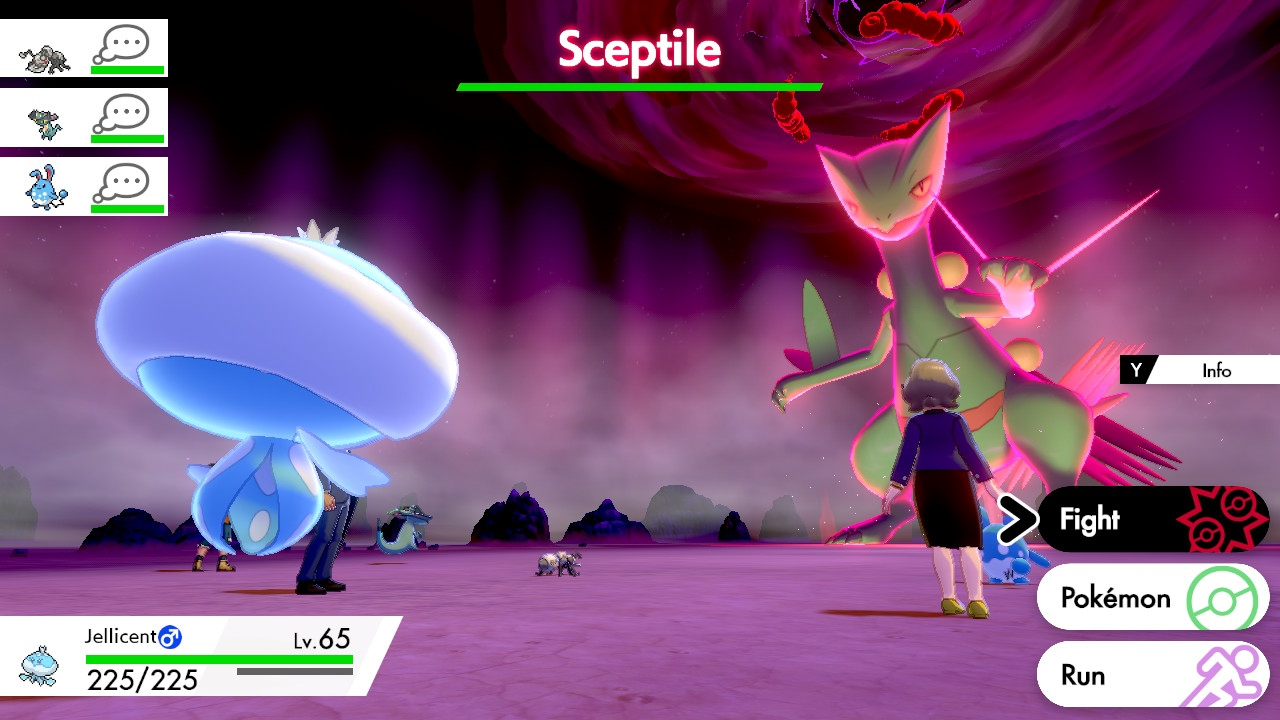
Adding Pokemon to your collection, even if they are shiny, is hardly an incentive to the frustration. Even then, the Legendaries and starters don’t even register in your Pokedex.
While some of the overworld Legendary Pokemon can also be shiny (Regis and Mustakeers) it baffles me how it was done like this. Past games rewarded players with multiple encounters with increased shiny rates, or Ultra Sun and Ultra Moon‘s wormhole minigame increasing the odds if you did better.
If you wish to pay for Pokemon Home to transfer from older games (or don’t mind the limitations), I struggle to think of a reason why you wouldn’t transfer legendary shinies from the Ultra games over a Dynamax Adventure.
Even if the nature and IVs are all wrong, you can fix the up with items in Sword and Shield; though you’ll need to constantly soft reset if you want it shiny. This was the very thing that made me quit the franchise before reviews dragged me back in.
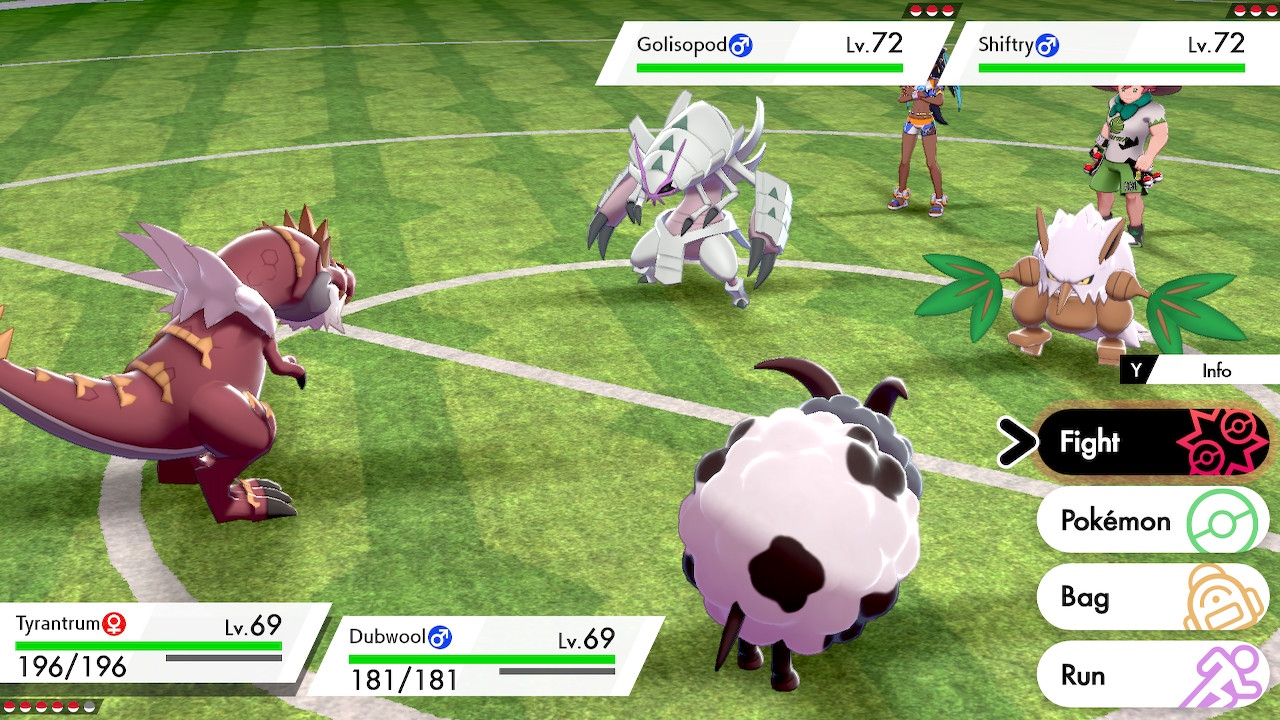
Ignoring the above disasters; the battles are actually a fair challenge. The wild Pokemon are in their early to mid level 60s, and come packed with their strongest moves to keep you on your toes. The legendaries outside of Dynamax Adventures meanwhile range from 70 to 80; with the only two trainers battles here being 70 to 75.
However, after beating the DLC’s main story you unlock the Galarian Star Tournament. Much like the Champion tournament of the post game, players fight against random gym-leaders and major trainers. Along with their levels being 70 to 80, all of these battles are double battles fought alongside a trainer of your choice.
As the standard format for the game’s championships in real life, it is a surprise to see how little attention double battles get in the mainline games. The tactics on display here aren’t terribly amazing, as it appears your opponents don’t adapt their moves based on who their partner is. Good synergies usually occur by mistake, so catching legendaries (especially those who boost their stats) will be the greater challenge.
Even so, completing the Star Tournament raises the level of the original single battle Champion’s tournament to similar levels (though not with new teams thanks to the expansion’s new Pokemon). The Star Tournament also does feature some smirk-worthy banter between the trainers at times.
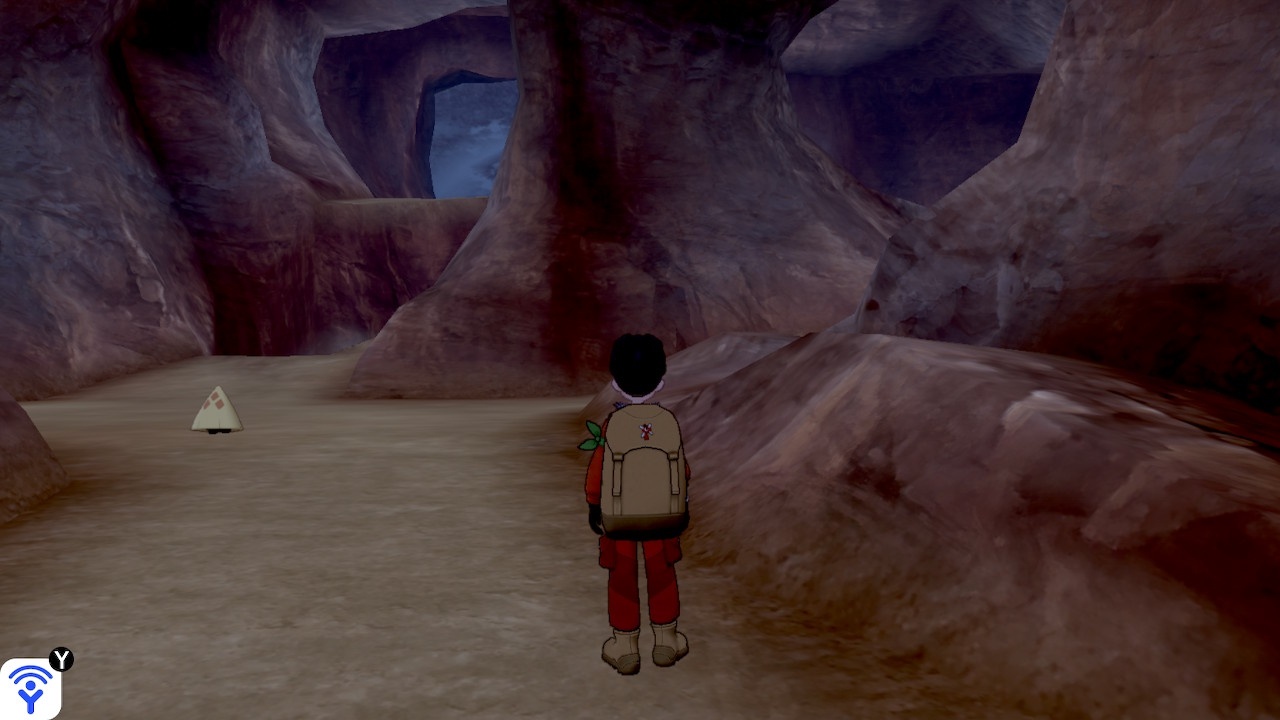
Continuing the theme of Game Freak learning half their lesson, there are times the game looks closer to the standard it should hold. Pre-rendered cutscenes have better animation, and the special effects flying off some of the new moves look suitably impressive. Nonetheless, the animation of the Pokemon themselves is still as stiff as ever.
While a large chunk of the map is covered in snow, there are some grassier and cave areas to keep everything looking the same. While it certainly looks like rambling nature, you’ll still run across muddy textures, and those eagle-eyed will probably notice re-used assets such as trees and the houses.
As always, the music in the overworld and cutscenes are serviceable; being appropriately icy, mystical, or tense as needed. While the musketeers miss out on a remix of their theme, the Regis’ battle theme helps sell their almost robotic nature.
One of the stand outs is the Galarian Birds theme. As their Pokedex lore explains how they are malicious (minus Zapdos who just seems to run fast and kick), their synth-heavy theme helps convey them being devoid of honor and enjoying how they toy with you. It starts suspenseful and off kilter, before become more heroic to represent your conquest of them.
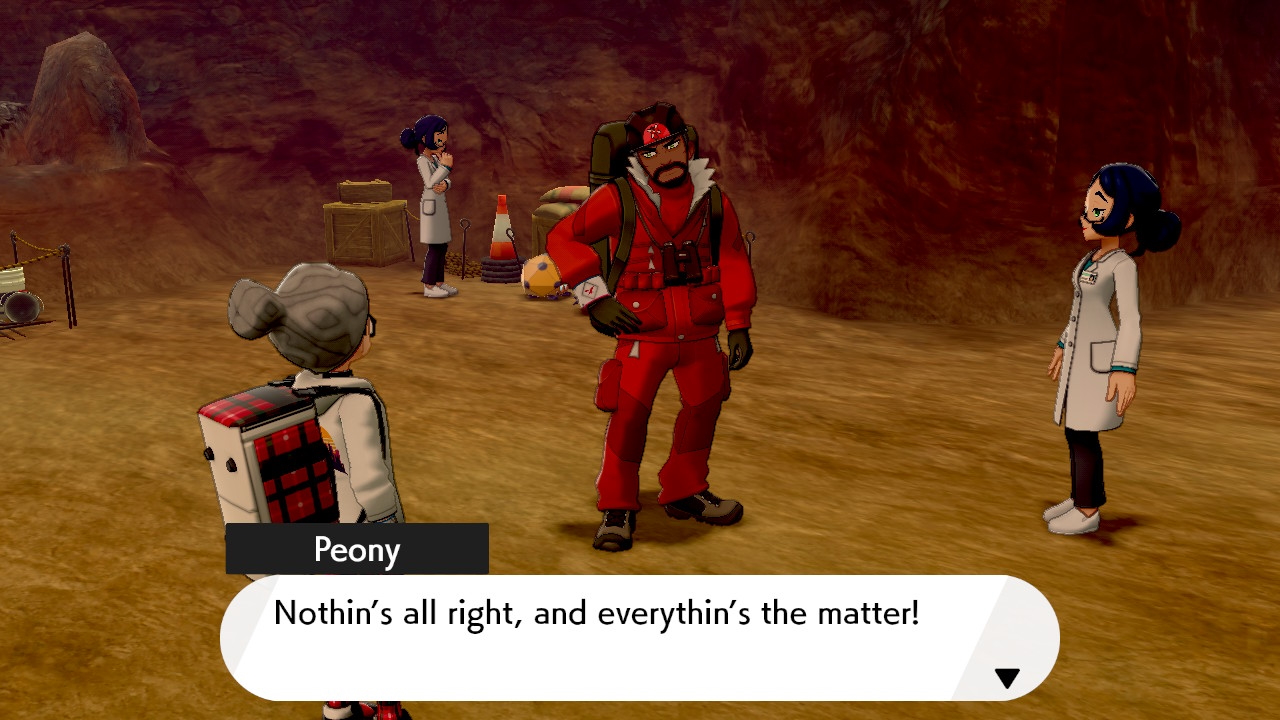
The Crown Tundra is a fitting crown to Pokemon Sword and Shield experience, and that should be taken as an insult. There are signs of Game Freak learning from past mistakes, but the major issues still plague it with fresh ones on top.
Even if the expansions were a free update, they only reach the bare minimum of what should be expected at select moments. To make it worse, all of the above can be done in a day or weekend.
The stories still lack any bite or intrigue, and the graphics and animations are outdated. Areas have become more interesting to explore, and raising a Pokemon for the competitive scene is easier. The new Dynamax Adventures only serves as a tool of frustration, and a maddening time sink if you want shinies.

If you enjoyed your time with the game and prior expansion, then The Crown Tundra certainly gives what you crave. Though if you can get all the Pokemon you want via trading, I struggle to think of what this expansion offers that you can’t get watching a let’s play on YouTube.
Ultimately, there are better RPGs on the Nintendo Switch to play. For the highest-grossing media franchise, Pokemon is an emperor with no clothes. Instead of giving loyal fans bang for their buck, they’re now asking for DLC that barely adds instead of improving. If Pokemon is the king, it’s about time the fans had a coup.
Pokemon Sword and Pokemon Shield Expansion Pass was reviewed on a Nintendo Switch using a review copy purchased by Niche Gamer. You can find additional information about Niche Gamer’s review/ethics policy here.